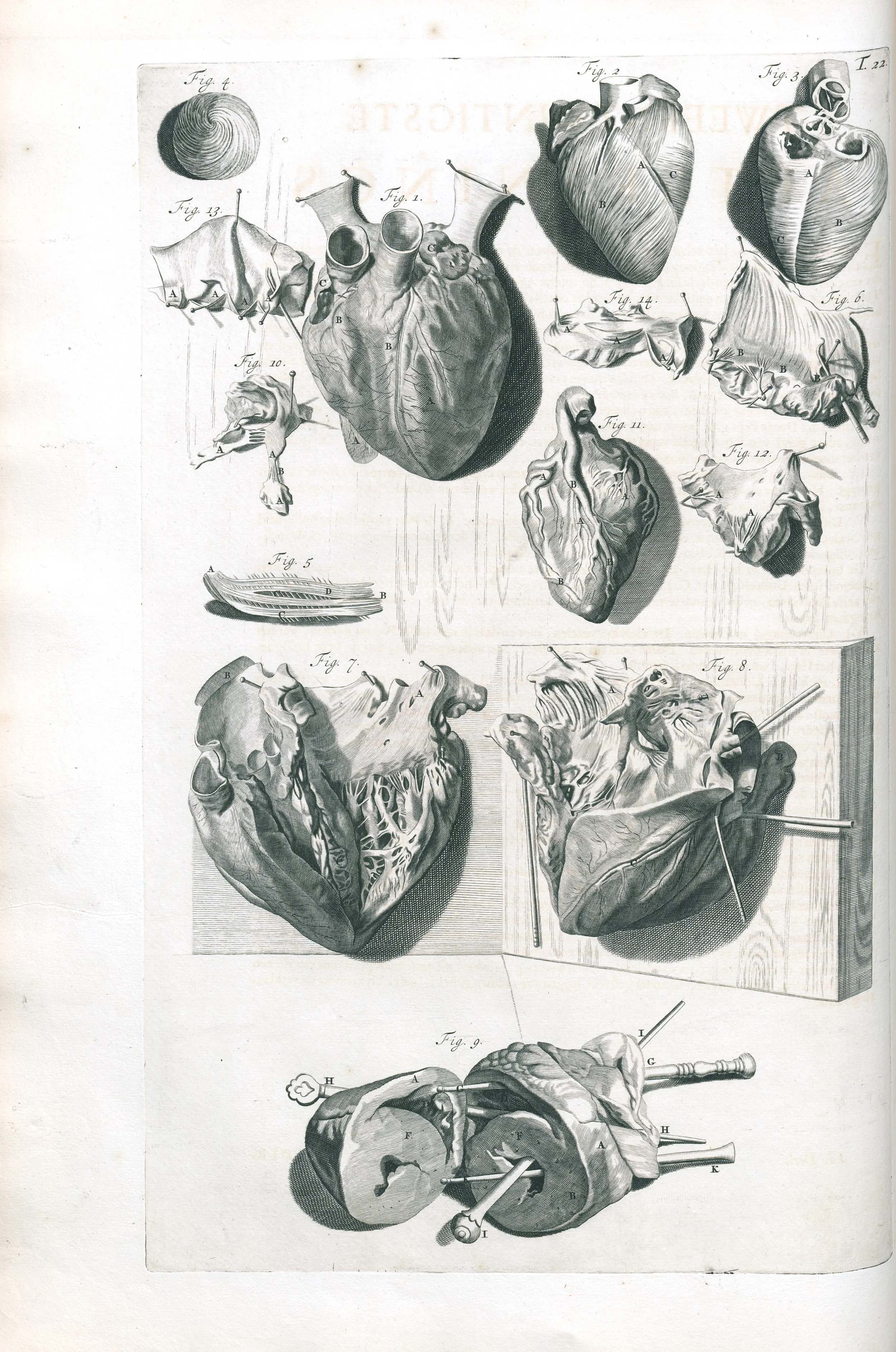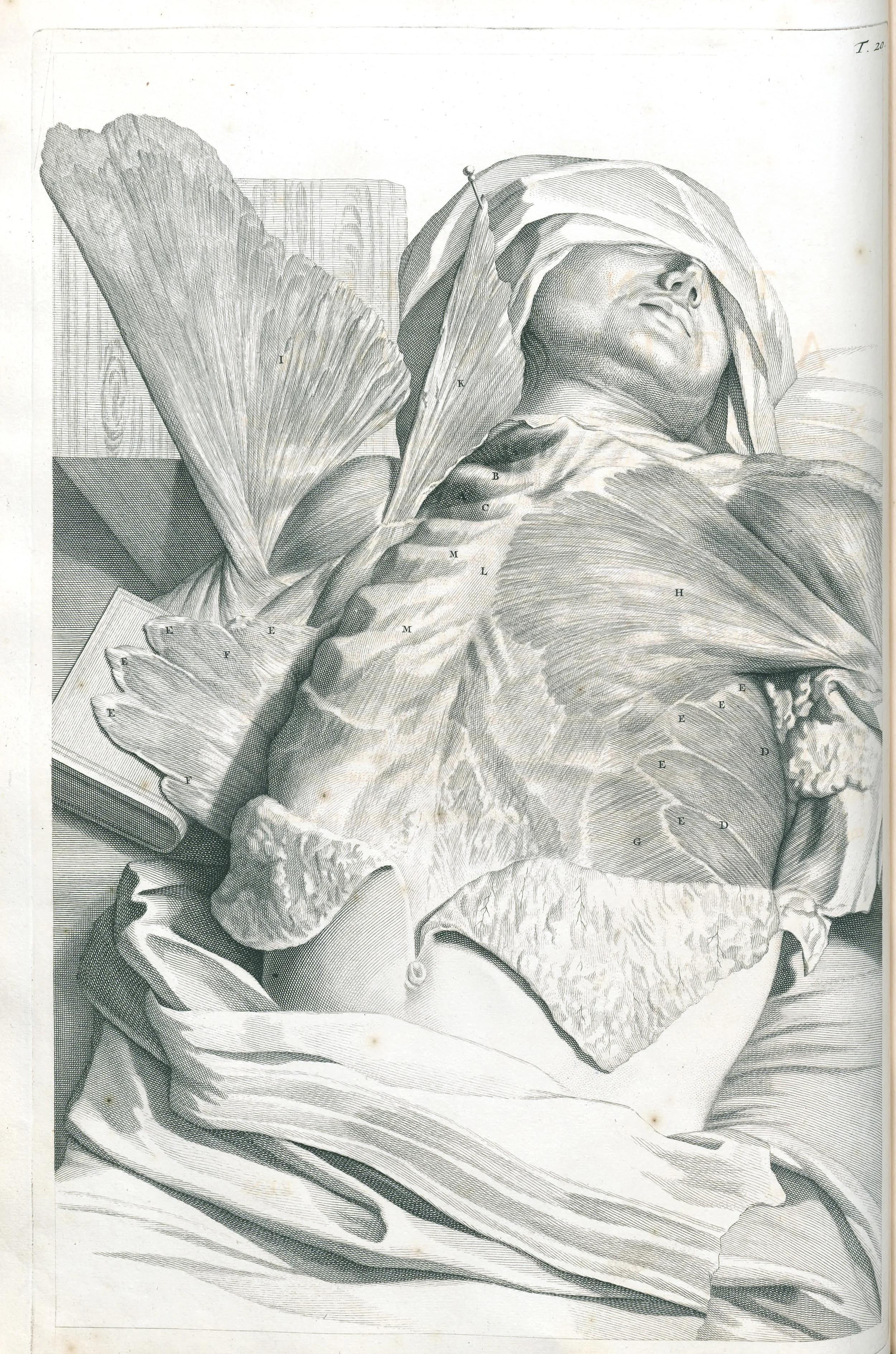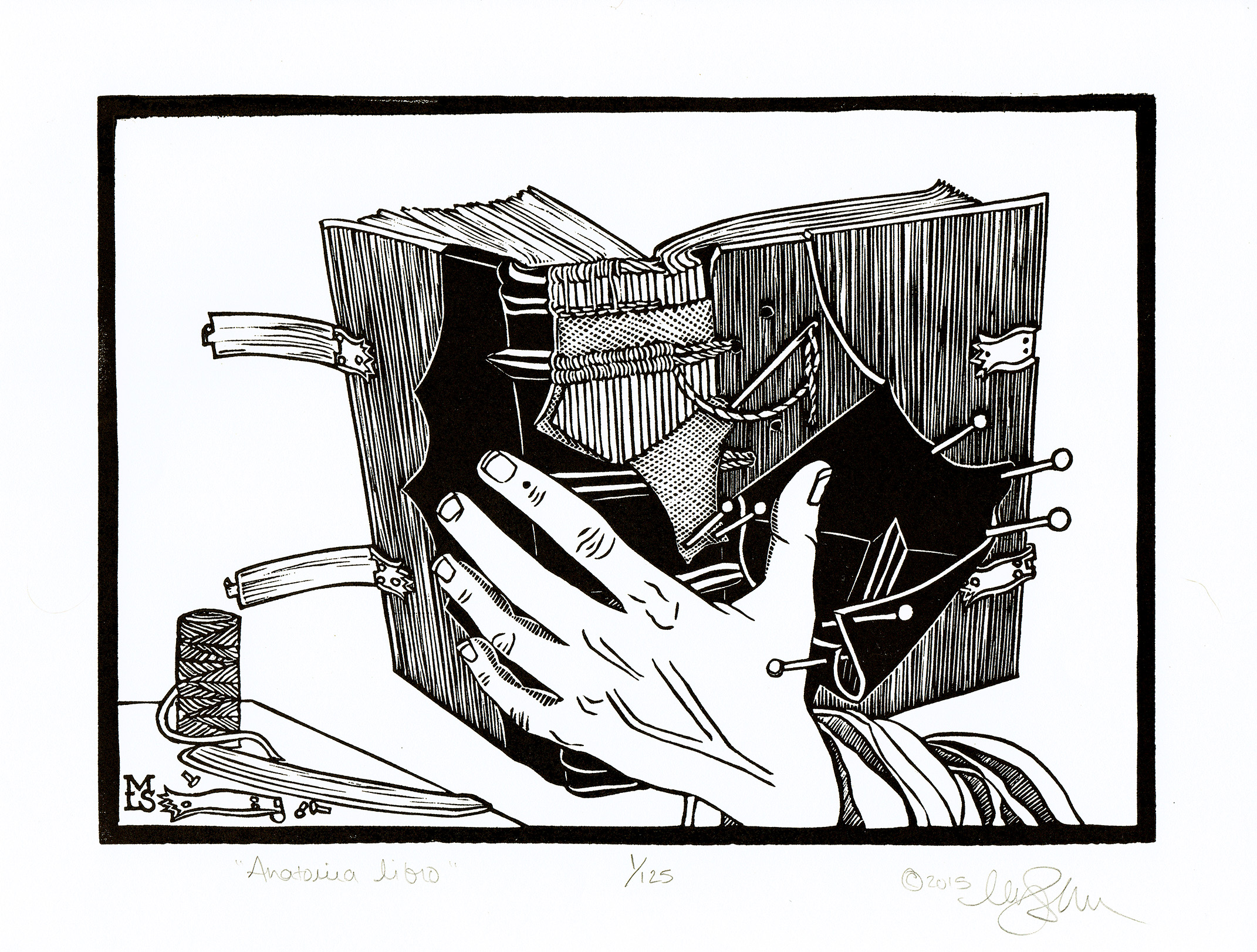Anatomia libro: The Anatomy of the Book
Mary Sullivan
Plate 71 showing the dissection of the left forearm and hand. The hand is strategically posed, perhaps to reference a gesture often depicted in Renaissance art. Govard Bidloo (1649-1713). Anatomia humani corporis. Amsterdam: Sumptibus viduae Joannis à Someren, haeredum Joannis à Dyk, Henrici & viduae Theodori Boom, 1685. Heirs 724 Illustration by Gerard de Lairesse.
As bookbinders we straddle the line between seamstress and surgeon, fabrication and triage. Whether we are tasked with giving birth to new books or in the rehabilitation of the tired and broken, our trade is governed by our understanding of their construction and the methodic choreography of that process between our hands, our tools, and our materials.
Along with 28 other book artists, I was asked to create a piece for “Micrographia: Book Art Responses to Early Modern Scientific Books” an exhibit in conjunction to the symposium "Scientific Books and Their Makers" at the University of Iowa in Iowa City in October, 2015. Each artist was asked to create a piece in response to an early scientific text in which the invention of the microscope was instrumental in its content and creation. I was assigned a study of anatomical dissection completed in 1685 by Dutch anatomist Govard Bidloo with illustrations by Gerard de Lairesse. As I am unable to read neither Latin nor Dutch, my attention naturally gravitated to the illustrations.
While studying Gerard de Lairesse’s renderings I was struck with a familiarity similar to how we as bookbinders document our own work today. The illustrations in Anatomia not only accurately identify the subject matter in microscopic detail, but they also serve as somewhat of a manual of practice, as if by viewing the illustrations alone one could conceivably explore the human body.
Plate 22 showing the dissection of the heart. Check out those decorative probes! Govard Bidloo (1649-1713). Anatomia humani corporis. Amsterdam: Sumptibus viduae Joannis à Someren, haeredum Joannis à Dyk, Henrici & viduae Theodori Boom, 1685. Heirs 724 Illustration by Gerard de Lairesse.
Less of a sterile presentation of parts and more of an “as you were dissecting” manner, the illustrator shows the process of dissection in stages. The tools, working surfaces, and drapes garner just as much reverence as the body itself. The body is often strategically posed. The restraints, pins, probes, and sutures are all presented with as much attention to detail as any tissue sample showing not only respect for the subject, but it also demonstrates pride in the process and craftsmanship of anatomical dissection.
In plate 20, a book is used to raise a section of skin out of the shadows so that it is better lit for rendering. Whether or not an actual book was used as a prop during dissection is unlikely. Govard Bidloo (1649-1713). Anatomia humani corporis. Amsterdam: Sumptibus viduae Joannis à Someren, haeredum Joannis à Dyk, Henrici & viduae Theodori Boom, 1685. Heirs 724 Illustration by Gerard de Lairesse.
Books are occasionally depicted as props, used to support severed limbs or flayed layers of tissue. While is unlikely that the anatomist used a finely bound tome in such a manner in the anatomical theatre the symbolism of the books in this case not only points to knowledge, it is also a possible acknowledgement of one’s forbearers and their contribution to the trade.
"Anatomia libro" My response to the de Lairesse's illustrations in Anatomia, specifically to plate 71. Signed and numbered limited edition print. Illustrated and carved into linoleum, printed on a C&P Pilot letterpress by Mary Louise Sullivan, Copyright 2015. Prints from the edition are available HERE.
Bookbinders, like anatomists, are people of tools, of process, and of materials. Our trade is consumed not only with the “how” but also in the “why” of our craft. To every bookbinder and books artist, the “what” is just as varied as we are, and the “who” includes not only ourselves, but extends also to our instructors, our histories, our consumers, and our readers.
*All leaves in this post from Bidloo’s Anatomia are from the digitized copy provided by the United Stated National Library of Medicine. Images have been color corrected for clarity. https://www.nlm.nih.gov/exhibition/historicalanatomies/bidloo_home.html



